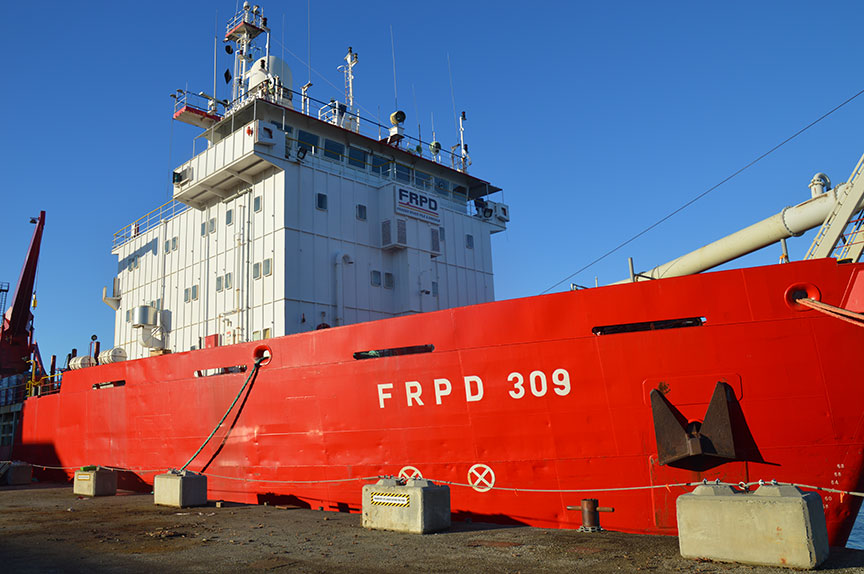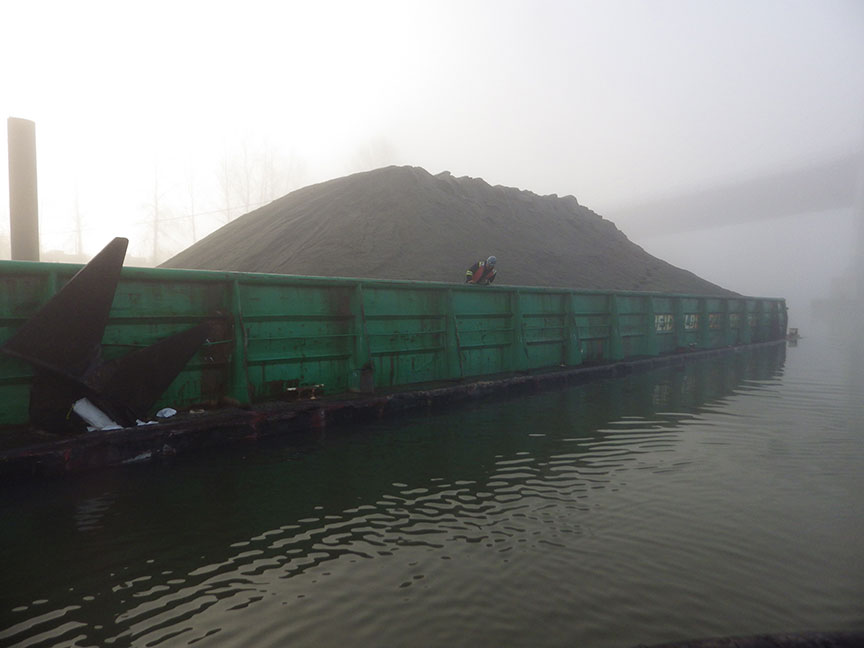Collision
Dredger FRPD 309
Fraser River, British Columbia
The occurrence
On 5 December 2017, the dredger FRPD 309 lost propulsion and collided with the barge EVCO 60 which was under tow by the tug Storm Wave along the Fraser River in British Columbia. The dredger and barge sustained damage.
Media materials
News release
Investigation report: Collision of a dredger with a barge, December 2017, BC
Read the news release
Deployment notice
TSB deploys a team following a collision between a dredger and a barge in the South Arm of the Fraser River, British Columbia
5 December 2017
— The Transportation Safety Board of Canada (TSB) is deploying a team of investigators following a collision between a dredger and a barge in the South Arm of the Fraser River, British Columbia. The TSB will gather information and assess the occurrence.
Investigation information
Download high-resolution photos from the TSB Flickr page.
Class of investigation
This is a class 4 investigation. These investigations are limited in scope, and while the final reports may contain limited analysis, they do not contain findings or recommendations. Class 4 investigations are generally completed within 220 days. For more information, see the Policy on Occurrence Classification.
TSB investigation process
There are 3 phases to a TSB investigation
- Field phase: a team of investigators examines the occurrence site and wreckage, interviews witnesses and collects pertinent information.
- Examination and analysis phase: the TSB reviews pertinent records, tests components of the wreckage in the lab, determines the sequence of events and identifies safety deficiencies. When safety deficiencies are suspected or confirmed, the TSB advises the appropriate authority without waiting until publication of the final report.
- Report phase: a confidential draft report is approved by the Board and sent to persons and corporations who are directly concerned by the report. They then have the opportunity to dispute or correct information they believe to be incorrect. The Board considers all representations before approving the final report, which is subsequently released to the public.
For more information, see our Investigation process page.
The TSB is an independent agency that investigates air, marine, pipeline, and rail transportation occurrences. Its sole aim is the advancement of transportation safety. It is not the function of the Board to assign fault or determine civil or criminal liability.

